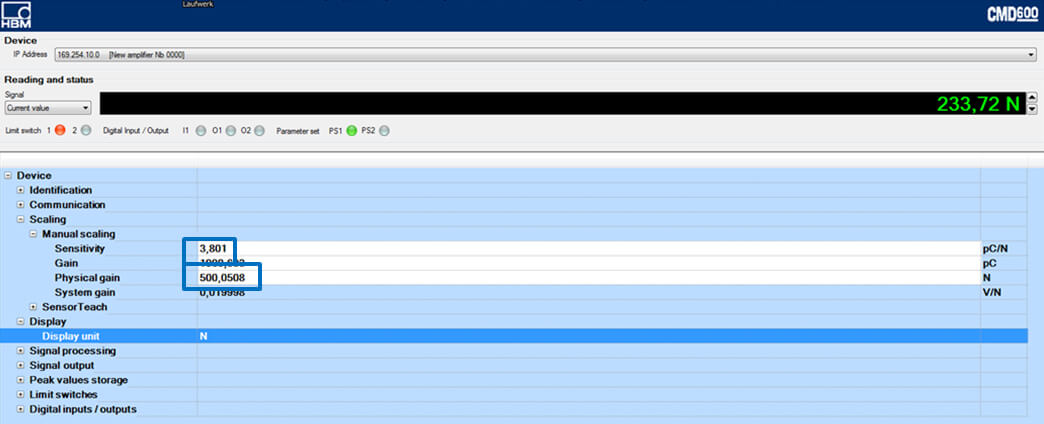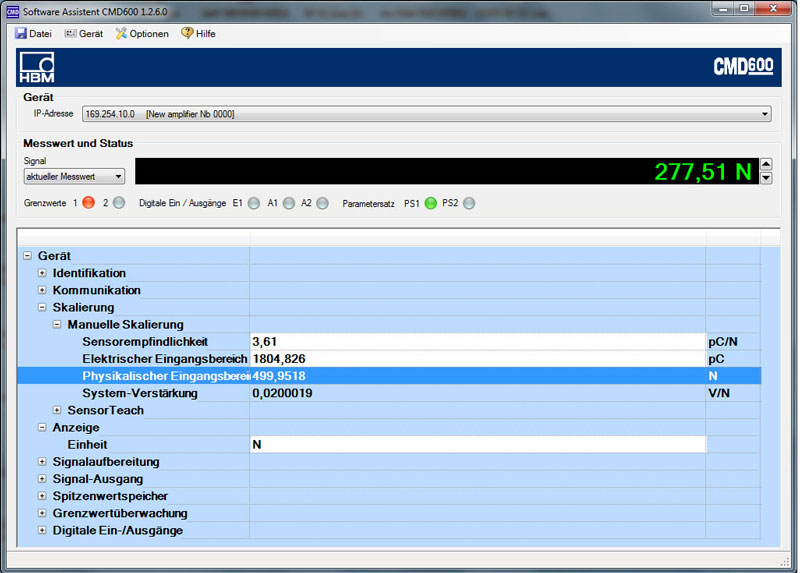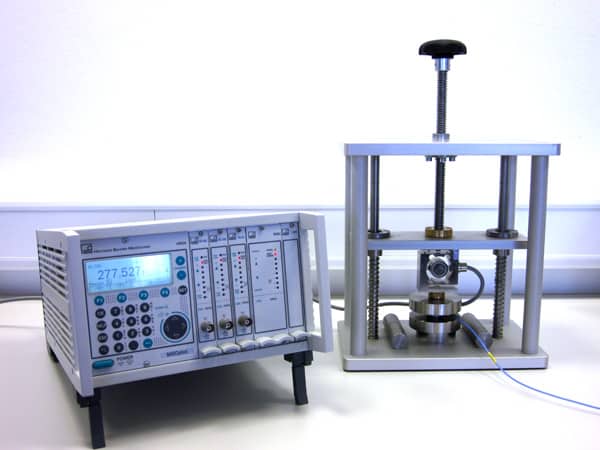As already mentioned above, a measuring chain comprising piezoelectric force washers (CFW) as sensors always needs to be calibrated when the sensor has been mounted. This means that the mechanical mounting conditions should not be changed after the calibration procedure. This applies to pre-stress in particular.
Three steps need to be taken to calibrate a measuring chain:
- Determining the sensor's sensitivity after mounting: The force in N, a mass in kg or similar is measured simultaneously with the charge generated by the piezoelectric force washers at this force. The sensitivity can now be easily calculated by dividing the charge by the force (sensitivity = charge/force).
- Setting up the charge amplifier: The measuring range and gain of the CMD600 digital charge amplifier are freely adjustable. The sensitivity calculated as described above needs to be input in the Assistant software. A reasonable measuring range should be set to guarantee optimal resolution.
- Verifying the adjusted parameters: Finally, we recommend that you once again compare the measuring chain to the reference measuring chain.
In the following sections of this article we assume that your sensor has been mounted and adequately pre-stressed. The pre-stress can be directly measured using the force washer. A manufacturing certificate has been included for this purpose. Adjust the sensitivity on the CMD600 as required and increase pre-stress to the desired value. Minimum: 10% of the force washers nominal (rated) force.
When using the CMD600 charge amplifier, connect it to a PC and use CMD Assistant for configuration. Please observe the CMD600 operating manual. Set the sensor's sensitivity to 1, the unit to pC. Using this configuration, the amplifier measures the charge in pC.
 |  |
Configure the CMD as described above: The sensitivity is 1 and you measure the sensor signal in pC. This is how to start the calibration procedure.









